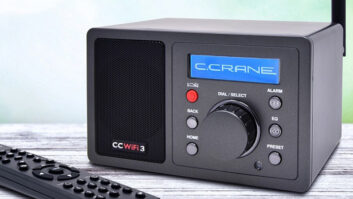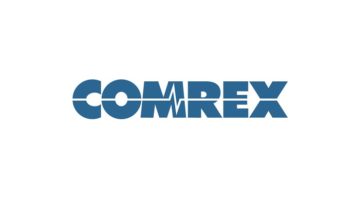This story originally appeared in Radio World’s sister publication TV Technology.
I was working on a string of projects back in the mid-1990s that required us to fly in talent to handle Spanish and Portuguese translation. We searched for ways to make the work more efficient and discovered that a technology called Integrated Services Digital Network was being used by producers to record musicians from all over the world and by movie studios for remote ADR. It offered high-quality audio and latency low enough that conversations between the studio and remote artist felt completely natural.
We hopped onboard with one of the early black-front Telos Zephyrs, which was compatible with practically everything and a massive APT WorldNet unit that only talked to other APT units, and the codecs went into service doing remote voiceover sessions and live event announcing.
Voiceover artists (now voice actors) saw the potential of the technology right away, so many of them built their own ISDN-equipped studios and offered their services globally, and in the process, became the original “work-from-home” pioneers of the broadcast industry.
RUMOR MILL
ISDN technology has served broadcast professionals faithfully for nearly 30 years, but rumors have been circulating for some time that the telcos plan to stop providing it because the service is not profitable enough. Up to this point, it has remained just a rumor, but it now appears to be very real.
A voice actor friend is in the process of relocating his studio within the same New York City suburb. He has been told by Verizon, his long-time ISDN provider, that they will not reinstall his service once he leaves his present location, despite the fact that he has paid them thousands of dollars annually for decades for the privilege of having those lines. Unfortunately, no other provider in his area offers the service, so we have been looking at alternatives.
It makes sense that the telcos want to kill off ISDN just as they want to kill off the analog home telephone line. Both are remnants of the circuit-switched public telephone network, which makes inefficient use of the telco network compared to packet switching.
Circuit switching establishes individual point-to-point connections, switching both ends at the same time, and creating a dedicated connection between those two points. Packet switching isn’t interested in making dedicated point-to-point connections; it breaks data up into packets that are sent off on what could be completely different paths, to get reassembled at the far end. Packet switching can also send those packets to multiple destinations at the same time.
The ISDN lines themselves are copper-twisted pairs that carry digital data instead of analog and there are two variants. The type normally used with audio ISDN codecs is a basic rate interface, which consists of two 56 kbps bearer channels and a 16 kbps channel for data signaling.
Some codecs gang BRI lines together to improve quality, reduce latency and pass bidirectional timecode and control information. Each bearer channel is connected to the telco through a network interface (NT1); and each is assigned a service profile identifier, which tells the network who it is. The primary rate interface version is essentially a full T1 line carrying one 64 kbps signaling channel and 23 64 kbps bearer channels.
The monthly fee for a PRI is significantly more than a BRI, which is why it’s normally only installed to provide private branch exchanges (AKA PBX) to businesses. PRI, unlike BRI, doesn’t appear to be on the chopping block so far.
AVAILABLE OPTIONS
For those facing the loss of ISDN service, there are a number of options to consider with IP audio codecs seeming the obvious choice. Telos makes an intriguing device called a Zephyr Xport that connects to a traditional phone line, yet it can also connect to their Zephyr XStream ISDN codec. Unfortunately, since it only connects to that particular codec it’s only useful if the studio at the far end has an XStream with the proper version of software installed.
Source-Connect was the first software alternative that directly competed with ISDN, though it has since been joined by SoundStreak, ipDTL and Source-Connect Now. Each requires a computer, network connection and the same software at each end. They are differentiated primarily by their pricing models:
- Source-Connect offers three purchase options and a subscription;
- SoundStreak doesn’t charge talent, but does charge production;
- ipDTL has an array of pricing options, and
- Source-ConnectNOW is free with premium options available.
Most ISDN users are familiar with bridging services, even if they’ve never used one. These services started as a way for users with one type of ISDN codec to connect to an incompatible ISDN codec at the far end. The bridging site establishes connections to the origination and destination codecs using inhouse-compatible units, and passes audio between the units. These services now offer bridging from software codecs to ISDN codecs, especially appealing to anyone without ISDN service. Bridging services include industry stalwarts DigiFon, ISDN To-Go, ISDNBridge and Out of Hear.
There is one way to continue ISDN service without telco support, but it’s only feasible for those who work larger businesses: Generate the ISDN from the business PBX. IDSN lines created in this way work just like any other ISDN line with the exception that they need to dial out of the business network to place calls.
Choosing a technology replacement for ISDN is not easy, with client requirements always the key factor. Studios currently using ISDN should be able to continue using it for the foreseeable future, which means they will continue to require ISDN sessions from voice actors. However, once a studio decides to relocate, they may face this same dilemma. Next time we’ll take a look at making the transition from ISDN to IP codecs.
Jay Yeary is a broadcast engineer and consultant who specializes in audio. He is an AES Fellow and a member of SBE, SMPTE, and TAB. He can be contacted through TV Technology or at transientaudiolabs.com.
— TV Technology







